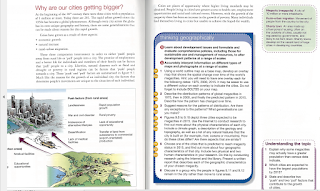Planning for Mock debate: "That technology is destroying young minds" 1/3
With your group you have been assigned whether you are affirmative of negative of this statement. As a group you need to plan your main ideas and select where you will speak.
Secondly, you need to draft your response keeping in mind your role (which speaker you are) and the process that you follow.
For example: Rawan, Francisca, Malak are affirmative for the topic 'That technology is destroying young minds', so they may organise it like this:
1st speaker: Rawan: Addiction/ distraction
2nd speaker: Francisca: Promotes violence and bad language
3rd speaker: Malak: Cyber bullying
Saif/ Faddi: You will choose and write one speakers part affirmative or negative the topic.
With your group you have been assigned whether you are affirmative of negative of this statement. As a group you need to plan your main ideas and select where you will speak.
Secondly, you need to draft your response keeping in mind your role (which speaker you are) and the process that you follow.
For example: Rawan, Francisca, Malak are affirmative for the topic 'That technology is destroying young minds', so they may organise it like this:
1st speaker: Rawan: Addiction/ distraction
2nd speaker: Francisca: Promotes violence and bad language
3rd speaker: Malak: Cyber bullying
AFFIRMATIVE TEAM:
—Speaker
1 – is the first speaker in the debate. They define the
topic and the affirmative team’s case
—Speaker
2 – is the third speaker in the debate. They attack the
argument of the 1st negative speaker and presents the
main part of his or her team’s case
—Speaker
3 – is the fifth speaker in the debate. They attack the
negative case and summarises his
or her team’s case.
NEGATIVE TEAM:
—Speaker
1 – is the second speaker in the debate. They define the
topic, attacks the
argument of the 1st affirmative, and then outlines
negative team’s case
—Speaker
2 – is the fourth speaker in the debate.
They attack the
argument of the 2nd affirmative speaker and presents the
main part of his or her team’s case
—Speaker
3 – is the final speaker in the debate. They attack the
affirmative case and summarises his
or her team’s case.
Other resources we have used in class:
https://sites.google.com/site/english8j/debatingSaif/ Faddi: You will choose and write one speakers part affirmative or negative the topic.










